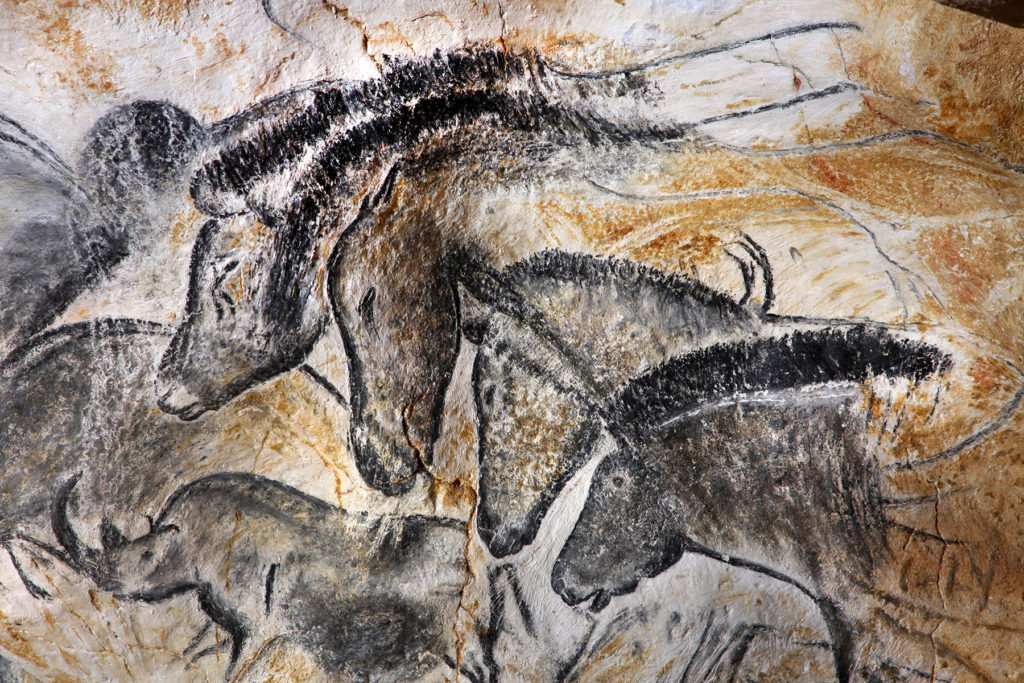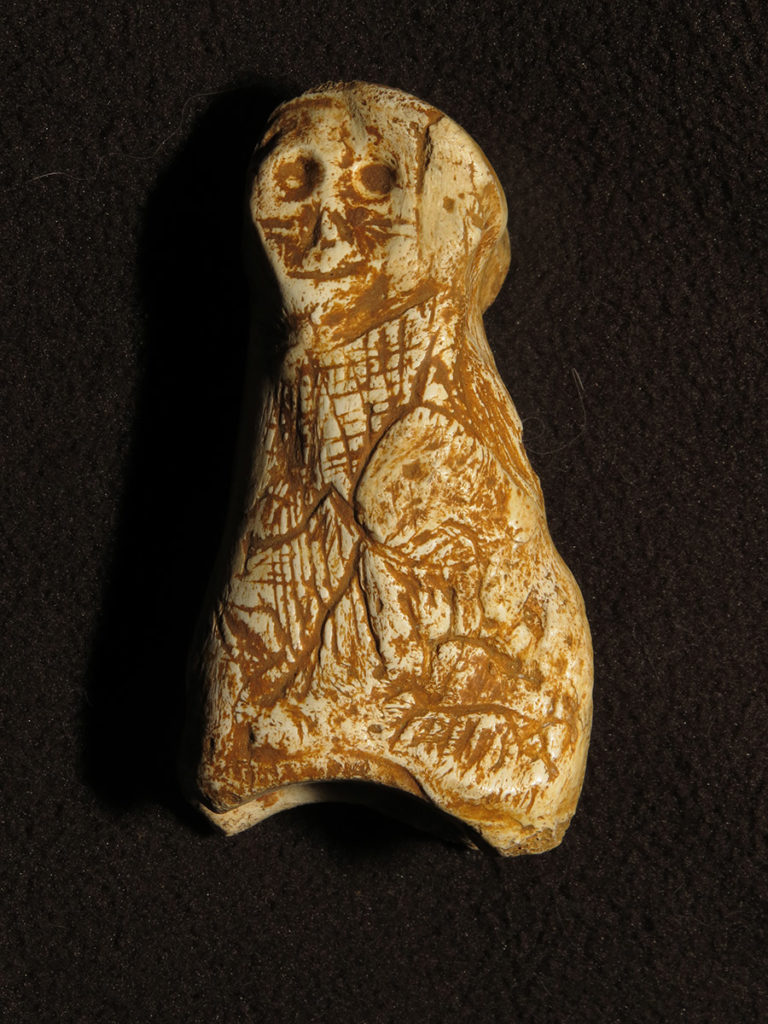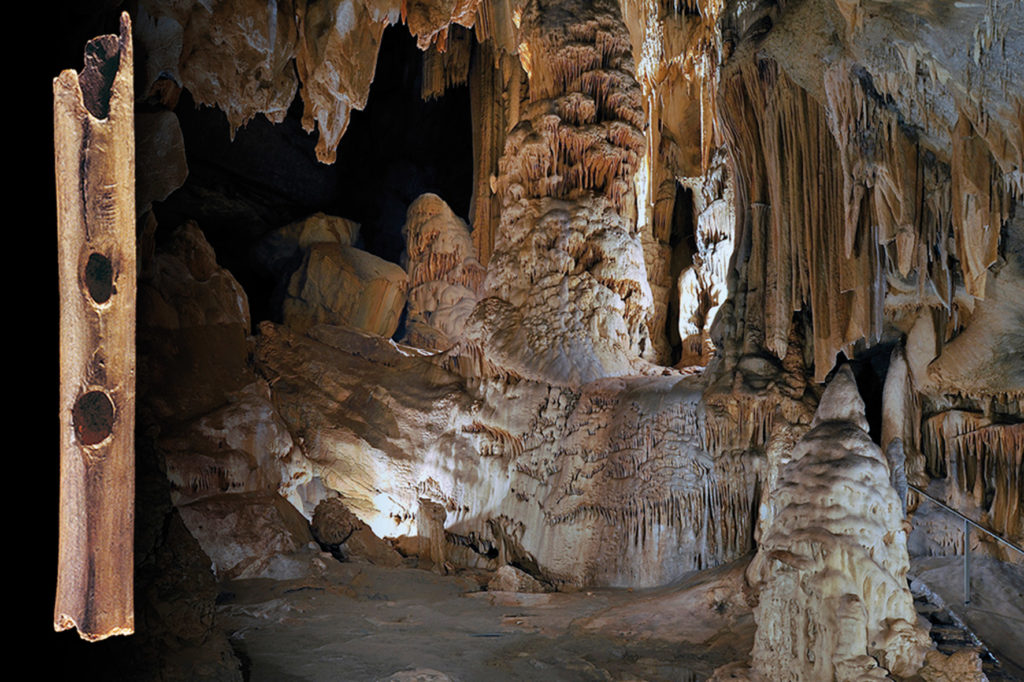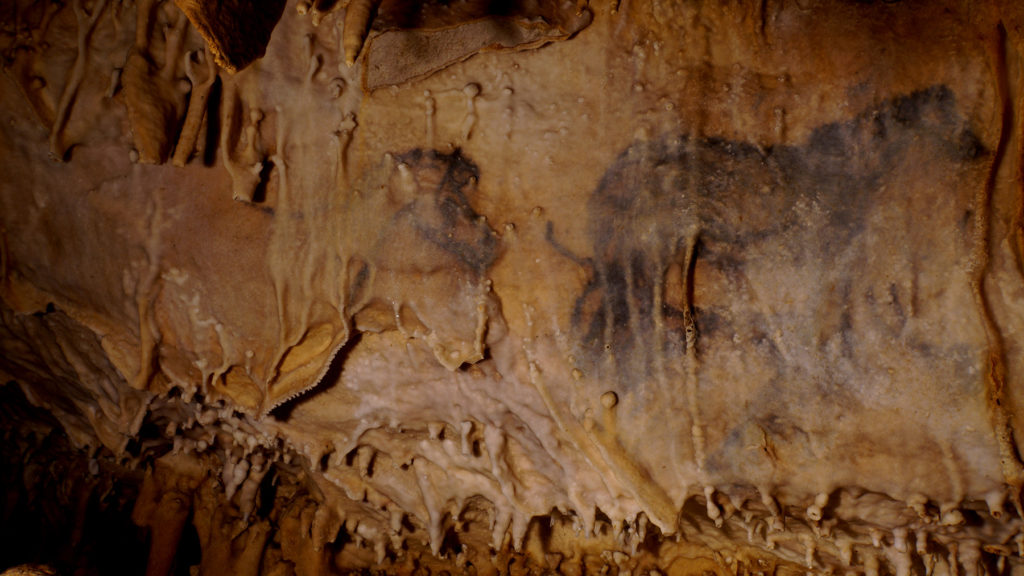Humans and caves
Since the very beginning, caves have attracted human beings and animals, as they did our early ancestors whom we call “cavemen”.
Because of its resistance to change and the relative stability of its climate, the underground world perfectly preserves much anthropological and paleontological evidence.
Some of these remains, like human and animal footprints or wall-paintings, are found almost exclusively in caves. But in addition to these evocative remains, there is a vast amount of information on the human beings of the past and their natural environment available on the ground and walls of many caves.
Archaeological research in the underground world is complementary to above-ground research, in shelters or the open air. Underground, it is very often the evidence of brief moments in the life of a few individuals that is revealed to us.
These snapshots, of exceptional quality, illustrate the film of the history of humanity patiently reconstructed by archaeologists and palaeontologists in the open air. (F. Rouzaud 1997)
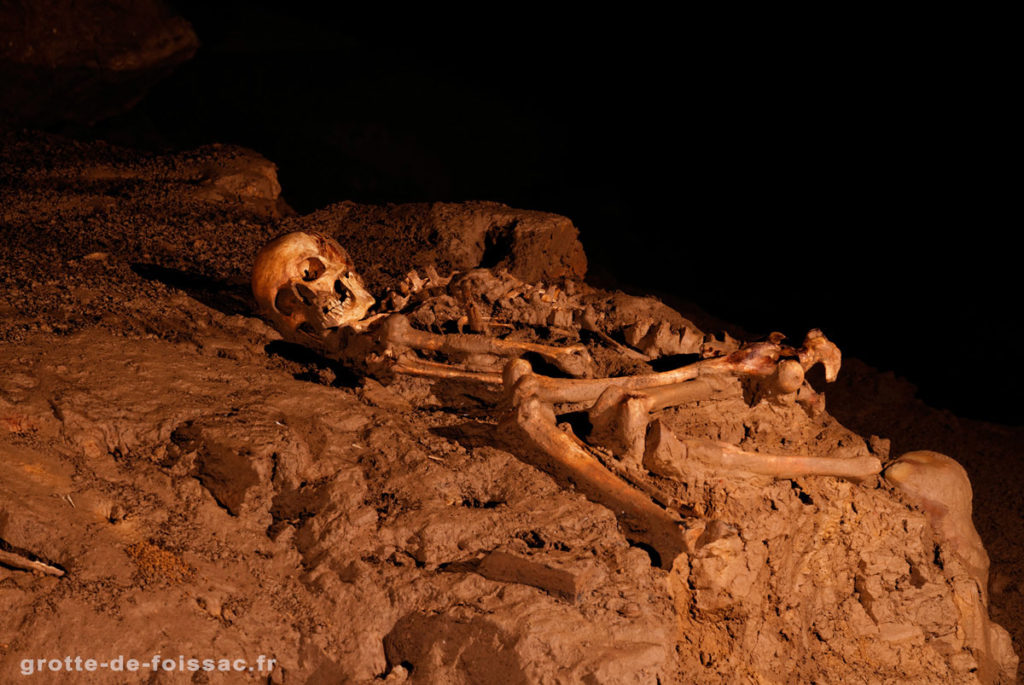
Man and caves
Like our oldest ancestors, called “cave men”, caves have always attracted humans and animals.
Because of their slow evolution and the relative stability of their climate, the underground world perfectly preserves many anthropogenic and paleontological evidence.
Some of these remains, such as human and animal footprints or cave art, are found almost exclusively in caves.
But beyond these moving testimonies, it is an important quantity of information “concerning the men of times gone by and their natural environment, which is available“ on the ground and the walls of numerous cavities.
”Archaeological research, in the underground world are complementary to those “carried out in the daylight, in shelters or in the open air. Underground, it is very often the “brief testimony of the lives of a few individuals that is revealed to us. These “snapshots, of exceptional quality, illustrate the film of the history of” mankind patiently reconstructed, externally by archaeologists and “paleontologists.” (F. ROUZAUD 1997)
Traces of animals in caves
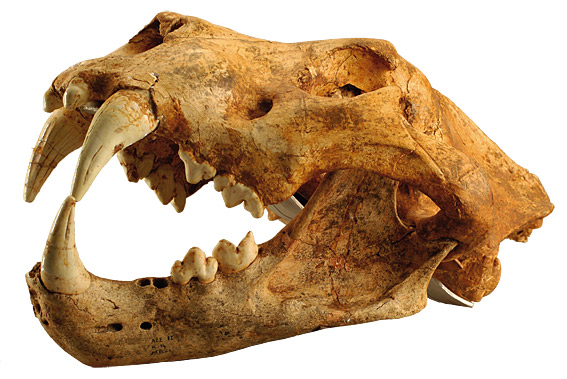
Traces left by animals are all evidence of the cavern environment, the same environment as cave-dwellers and the context they lived in. What we learn from them is complementary to the anthropological evidence.
If humans need at least some lighting to penetrate the dark areas of deep caverns, the same is not true for animals. Bats are the best-known modern inhabitants of the underground world.
Like them, many animals deliberately choose to live in caves. Sometimes as occasional visitors, sometimes completing some phase of their biological cycle (hibernation for example) in the quiet of caves, they have left traces of their passage below ground: footprints, scratches, wallows, nests, remains of meals or droppings, not to mention the skeletons of those that died here.
Often, too, hollows have formed natural traps into which animals have fallen and died. Their carcasses are sometimes swept along by water to accumulate in the underground systems. Their bones perfectly preserved and protected by the particularly favourable conditions of the underground environment give valuable evidence of ancient fauna
Conquest of the underground environment by humans
Nearly 400,000 years ago, humans conquered fire, and this artificial lighting enabled them to penetrate in the deep galleries. From the middle Palaeolithic onwards, the frequentation of dark areas of the underground environment became current.
Prehistoric humans left their mark on the walls as stippling, fingerprints, hands painted in negative, etc. This period, from 15,000 to 12,000 years ago, corresponds to the great age of prehistoric wall paintings. In France, more than 150 decorated Palaeolithic caves bear on their walls and floors the evidence of the passage and artistic expression of prehistoric peoples. As well as the engravings, drawings and paintings decorating the walls, on the ground the footprints and slides, traces of hearths, rudimentary lamps, tools and sculpted objects help us to follow the path of Palaeolithic people, trace their migrations, and imagine their living conditions. Some prehistorians, associating the characteristics of cave art with the rarity of habitats in their immediate neighbourhood, consider the deep decorated caves to be sanctuaries. Another approach to the occupation of deep caverns by human beings in the Magdalenian period lies in the harsh climate that reigned during the last ice age. A search for comfort, and the more clement temperature and the relative constancy of the internal climate which predominates in the deeper areas of the underground environment, may have motivated their conquest. At the end of this glacial period, about 10,000 years ago, humans seem to have abandoned the deeper galleries. Less rigorous climatic conditions encouraged life out of doors and, in the underground environment, there was a phase of concretion which locally fossilised the traces of the preceding period (Grotte de la Vache in Ariège).
Humans returned to the deep caves in the Neolithic, about 6,000 years ago, but then their motivations were different…ge).
Areas of occupation in caves
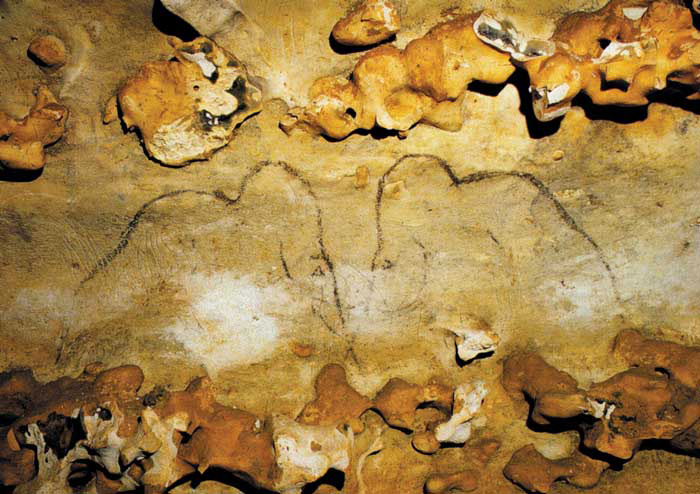
The distribution of remains and the evidence of human and animal activity in caves is not random. It depends on both the characteristics of the cave itself and the resources and motivations of the beings who lived there. Better than a long description, the diagram below shows the location of areas of occupation in caves and the corresponding activities.
